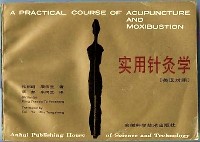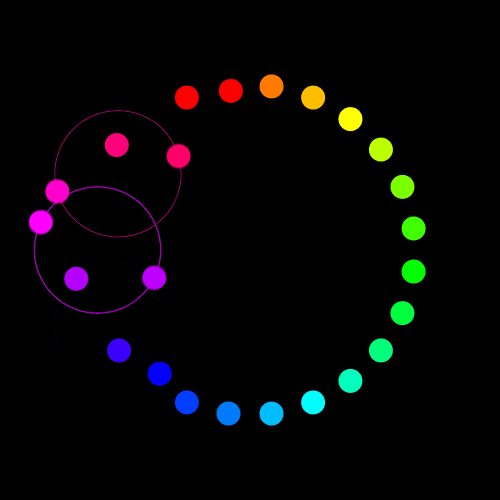
A practical course of acupuncture and moxibustion
副标题:无
作 者:孔昭遐,屠佑生著;蔡郁,朱同生译
分类号:
ISBN:9787533708450
微信扫一扫,移动浏览光盘
简介
并列题名:A practical course of acupuncture and moxibustion:本书侧重介绍了针灸的基本知识、基本技能及临床常见病、多发病的针灸治疗等。
目录
第一章 藏象
第一节 脏腑
一、心与小肠
(一)心
[附:心包]
(二)小肠
二、肝与胆
(一)肝
(二)胆
三、脾与胃
(一)脾
(二)胃
四、肺与大肠
(一)肺
(二)大肠
五、肾与膀胱
(一)肾
[附:命门]
(二)膀胱
六、三焦
[附:脑]
[附:女子胞]
第二节 脏腑之间的关系
一、脏与脏之间的关系
二、脏与腑之间的关系
三、腑与腑之间的关系
第三节 精,气,血,津液,神
一、气
二、血
三、津液
四、神
五、精,气,血,津液,神的相互关系
第二章 经络总论
(三)诊断方面
(四)治疗方面
(五)预防方面
第二节 十二经脉
一、名称分类
二、循行交接
三、表里关系
四、流注次序
第三节 奇经八脉
第三章 腧穴总论
第一节 腧穴的含义
第二节 腧穴的分类
第三节 腧穴的主治作用
第四节 腧穴的定位
一、解剖标志取穴法
二、骨度法
三、指量法
第四章 十四经脉及常用腧穴
第一节 手太阴肺经
尺泽,列缺,少商
第二节 手阳明大肠经
合谷,曲池,肩髃,迎香
第三节 足阳明胃经
地仓,颊车,天枢,犊鼻,足三里,解溪
第四节 足太阴脾经
公孙,三阴交,阴陵泉,血海
第五节 手少阴心经
少海,神门
第六节 手太阳小肠经
后溪,天宗,听宫
第七节 足太阳膀胱经
睛明,天柱,风门,肺俞,心俞,膈俞,肝俞,胆俞,脾俞,胃俞,肾俞,大肠俞,小肠俞,膀胱俞,上髎,次髎
第八节 足少阴肾经
涌泉,太溪
第九节 手厥阴心包经
内关,中冲
第十节 手少阳三焦经
外关,肩髎,翳风
第十一节 足少阳胆经
风池,肩井,居髎,环跳,风市,阳陵泉,悬钟,丘墟
第十二节 足厥阴肝经
太冲,期门
第十三节 督脉
长强,命门,大椎,哑门,风府,百会,水沟
第十四节 任脉
中极,关元,气海,神阙,中脘,膻中,天突,廉泉
第十五节 经外奇穴
印堂,太阳,夹脊,八邪,八风
第五章 针灸法
第一节 针刺法
一、针刺工具
二、练针法
三、针刺前的准备
四、毫针刺法
(一)进针法
(二)针刺的角度和深度
(三)行针与得气
(四)留针
(五)透针
(六)针刺补泻
(七)出针
五、针刺意外的处理及预防
(一)晕针
(二)滞针
(三)弯针
(四)断针
(五)出血和血肿
(六)针刺时的注意事项
[附:创伤性气胸]
第二节 灸法
一、常用灸法
(一)艾炷灸
(二)艾条灸
(三)温针灸
二、灸的注意事项
[附:拔罐法]
第三节 其他针法
一、三棱针
二、皮肤针
三、皮内针
四、电针
INTRODUCTION
PART ONE Synopsis of Zang Xiang Theory in Traditional Chinese Medicine
1.Zàng Fǔ
1.1 Heart and Small Intestine
i.Heart
(annex:Pericardium)
ii.Small Intestine
1.2 Liver and Gallbladder
i.Liver
ii.Gallbladder
1.3 Spleen and Stomach
i.Spleen
ii.Stomach
1.4 Lungs and Large Intestine
i.Lungs
ii.Large Intestine
1.5 Kidneys and Urinary Bladder
i.Kiāneys
(annex:Mìng Mén)
ii.Urinary Bladder
1.6 Sānjiāo
(annex:Brain)
(annex:Nǔzǐbāo)
2. The Relationship of Zàng and Fǔ
2.1 The Relationship of Zàng orgnas
2.2 The Relationship between Zàng Organs and Fǔ Organs
2.3 The Relationship of Fǔ Organs
3. Jīng,Qì,Blood ,Jīnyè and Shén
3.1 Qì
3.2 Blood
3.3 Jīnyè(Body fluid)
3.4 Shén (Vitality)
3.5 The Relationship between Jīng ,Qì,Blood,Jīnyè and Shén
PART TWO General Account of Jīngluò
1. Concept ,Composition and Function
1.1 Basic Concept of Jīngluò
1.2 Composition of Jīngluò
1.3 Function of Jīngluò
i. Physiology
ii. Pathology
iii. Diagnosis
iv. Treatment
v. Prevcntion
2. Twelve Channels
2.1 Classification
2.2 Channel Routes and Their Connection
2.3 External and Internal Relationships
2.4 Order of Circulation
3.The Eight Extra Channels
PART THREE Shū Xué——General Account of Acupuncture Points
1. Implication
2. Classification
3. Therapeutic Function
4. Method of Location the Acupuncture Points
4.1 Anatomical Landmark Methods
4.2 Bone-Longth Measurement
4.3 Finger Measurement
PART FOUR Fourteen Channels and Frequently Used Acupuncture Points
1. Lung Channel of Hand Taìyin
Chǐzé,Lièquè,Shàoshāng
2. Large Intestine Channel of Hand-Yángmíng
Hégǔ,Qūchí,Jiānyǔ,Yíngxiāng
3.Stomach Channel of Foot-Yángmíng
Dìcāng,Jiáchē,Tiānshū,Dúbí,Zúsānǐ-Jiěxī
4.Spleen Channel of Foot-Taìyīn
Gongsūn,Sānyīnjiāo,Yinlíngquán,Xuèhaǐ
5.Heart Channel of Hand-Shàoyīn
Shàohaǐ,Shénmén
6.Small Intestine Channel of Hand-Taìyáng
Hòuxī,Tiānzōng,Tīnggōng
7.Urinary Bladder Channel of Foot Taìyáng
Jīngmíng,Tiānzhù,Fēngmén,Fèishū,Xīnshū,GéShú,Cānshū,Dǎnshū,Píshū,Wèishū,Shènsh
8.Kidney Channel of Foot-Shàoyīn
Yǒngquán,Taìxi
9.Pericardium Channel of Hand-Juéyīn
Neìguān,Zhōngchōng
10.Sānjiāo Channel of Hand-Shàoyáng
Waìguān,Jiānliáo,Yìfēng
11.Gallbladder Channel of Foot-Shàoyáng
Fēngchí Jiānjǐng Jūliáo Huántiào FēngshìYánglíngquán Xuánzhong Qiūxū
12. Liver Channel of Foot-Juéyīn
Taìchōng,Qīmén
13.Governor Vessel Channel
Chángqiáng,Mìngmén,Dàzhuī,Yǎmén,Fēngfǔ Bǎihuì,Shuǐgōu
14.Conception Vessel Channel
Zhōngjí,Guānyuán,Qìhaǐ,Shénquè,Zhōngwǎn,Tánzhōng,Tiāntū,Liānquán
15.Extraordinary Points
Yìntáng,Tàiyáng,Jiājí,Bāxié,Bāfēng
PART FIVE Method of Acupuncture and Moxibustion
1. Acupuncture
1.1 Equipment
1.2 Acupuncture Practice
1.3 Preparations before Treatment
1.4 Puncture with Filiform Needles
i. Method of Inserting the Needles
ii. Angle and Depth
iii. Manipulation and Needling Sensation
iv. Retaīníng the Needle
v. Piercing Needing
vi. Reinforcement and Reduction
vii. Withdrawal of the Needle
1.5 Precautions and Prevention
i. Fainting
ii. Stuck Needle
iii.Bent Needle
iv. Broken Needle
v. Bleeding and Hematoma
vi. Attcntion during Acupuncture
[annex]Pneumothorax Caused by Injury in Acupuncture
2. Moxibustion
2.1 Manipulation Technique
i. Cone Moxibustion
ii. Stick Moxibustion
iii. Warm-Needle Moxibustion
2.2 Precautions
[Annex]cupping
3. Other Acupuncture Techniques
3.1 Three-Edged Needles
3.2 Cutaneous Needles
3.3 Intradermal Needles
3.4 Electric Needling
第一节 脏腑
一、心与小肠
(一)心
[附:心包]
(二)小肠
二、肝与胆
(一)肝
(二)胆
三、脾与胃
(一)脾
(二)胃
四、肺与大肠
(一)肺
(二)大肠
五、肾与膀胱
(一)肾
[附:命门]
(二)膀胱
六、三焦
[附:脑]
[附:女子胞]
第二节 脏腑之间的关系
一、脏与脏之间的关系
二、脏与腑之间的关系
三、腑与腑之间的关系
第三节 精,气,血,津液,神
一、气
二、血
三、津液
四、神
五、精,气,血,津液,神的相互关系
第二章 经络总论
(三)诊断方面
(四)治疗方面
(五)预防方面
第二节 十二经脉
一、名称分类
二、循行交接
三、表里关系
四、流注次序
第三节 奇经八脉
第三章 腧穴总论
第一节 腧穴的含义
第二节 腧穴的分类
第三节 腧穴的主治作用
第四节 腧穴的定位
一、解剖标志取穴法
二、骨度法
三、指量法
第四章 十四经脉及常用腧穴
第一节 手太阴肺经
尺泽,列缺,少商
第二节 手阳明大肠经
合谷,曲池,肩髃,迎香
第三节 足阳明胃经
地仓,颊车,天枢,犊鼻,足三里,解溪
第四节 足太阴脾经
公孙,三阴交,阴陵泉,血海
第五节 手少阴心经
少海,神门
第六节 手太阳小肠经
后溪,天宗,听宫
第七节 足太阳膀胱经
睛明,天柱,风门,肺俞,心俞,膈俞,肝俞,胆俞,脾俞,胃俞,肾俞,大肠俞,小肠俞,膀胱俞,上髎,次髎
第八节 足少阴肾经
涌泉,太溪
第九节 手厥阴心包经
内关,中冲
第十节 手少阳三焦经
外关,肩髎,翳风
第十一节 足少阳胆经
风池,肩井,居髎,环跳,风市,阳陵泉,悬钟,丘墟
第十二节 足厥阴肝经
太冲,期门
第十三节 督脉
长强,命门,大椎,哑门,风府,百会,水沟
第十四节 任脉
中极,关元,气海,神阙,中脘,膻中,天突,廉泉
第十五节 经外奇穴
印堂,太阳,夹脊,八邪,八风
第五章 针灸法
第一节 针刺法
一、针刺工具
二、练针法
三、针刺前的准备
四、毫针刺法
(一)进针法
(二)针刺的角度和深度
(三)行针与得气
(四)留针
(五)透针
(六)针刺补泻
(七)出针
五、针刺意外的处理及预防
(一)晕针
(二)滞针
(三)弯针
(四)断针
(五)出血和血肿
(六)针刺时的注意事项
[附:创伤性气胸]
第二节 灸法
一、常用灸法
(一)艾炷灸
(二)艾条灸
(三)温针灸
二、灸的注意事项
[附:拔罐法]
第三节 其他针法
一、三棱针
二、皮肤针
三、皮内针
四、电针
INTRODUCTION
PART ONE Synopsis of Zang Xiang Theory in Traditional Chinese Medicine
1.Zàng Fǔ
1.1 Heart and Small Intestine
i.Heart
(annex:Pericardium)
ii.Small Intestine
1.2 Liver and Gallbladder
i.Liver
ii.Gallbladder
1.3 Spleen and Stomach
i.Spleen
ii.Stomach
1.4 Lungs and Large Intestine
i.Lungs
ii.Large Intestine
1.5 Kidneys and Urinary Bladder
i.Kiāneys
(annex:Mìng Mén)
ii.Urinary Bladder
1.6 Sānjiāo
(annex:Brain)
(annex:Nǔzǐbāo)
2. The Relationship of Zàng and Fǔ
2.1 The Relationship of Zàng orgnas
2.2 The Relationship between Zàng Organs and Fǔ Organs
2.3 The Relationship of Fǔ Organs
3. Jīng,Qì,Blood ,Jīnyè and Shén
3.1 Qì
3.2 Blood
3.3 Jīnyè(Body fluid)
3.4 Shén (Vitality)
3.5 The Relationship between Jīng ,Qì,Blood,Jīnyè and Shén
PART TWO General Account of Jīngluò
1. Concept ,Composition and Function
1.1 Basic Concept of Jīngluò
1.2 Composition of Jīngluò
1.3 Function of Jīngluò
i. Physiology
ii. Pathology
iii. Diagnosis
iv. Treatment
v. Prevcntion
2. Twelve Channels
2.1 Classification
2.2 Channel Routes and Their Connection
2.3 External and Internal Relationships
2.4 Order of Circulation
3.The Eight Extra Channels
PART THREE Shū Xué——General Account of Acupuncture Points
1. Implication
2. Classification
3. Therapeutic Function
4. Method of Location the Acupuncture Points
4.1 Anatomical Landmark Methods
4.2 Bone-Longth Measurement
4.3 Finger Measurement
PART FOUR Fourteen Channels and Frequently Used Acupuncture Points
1. Lung Channel of Hand Taìyin
Chǐzé,Lièquè,Shàoshāng
2. Large Intestine Channel of Hand-Yángmíng
Hégǔ,Qūchí,Jiānyǔ,Yíngxiāng
3.Stomach Channel of Foot-Yángmíng
Dìcāng,Jiáchē,Tiānshū,Dúbí,Zúsānǐ-Jiěxī
4.Spleen Channel of Foot-Taìyīn
Gongsūn,Sānyīnjiāo,Yinlíngquán,Xuèhaǐ
5.Heart Channel of Hand-Shàoyīn
Shàohaǐ,Shénmén
6.Small Intestine Channel of Hand-Taìyáng
Hòuxī,Tiānzōng,Tīnggōng
7.Urinary Bladder Channel of Foot Taìyáng
Jīngmíng,Tiānzhù,Fēngmén,Fèishū,Xīnshū,GéShú,Cānshū,Dǎnshū,Píshū,Wèishū,Shènsh
8.Kidney Channel of Foot-Shàoyīn
Yǒngquán,Taìxi
9.Pericardium Channel of Hand-Juéyīn
Neìguān,Zhōngchōng
10.Sānjiāo Channel of Hand-Shàoyáng
Waìguān,Jiānliáo,Yìfēng
11.Gallbladder Channel of Foot-Shàoyáng
Fēngchí Jiānjǐng Jūliáo Huántiào FēngshìYánglíngquán Xuánzhong Qiūxū
12. Liver Channel of Foot-Juéyīn
Taìchōng,Qīmén
13.Governor Vessel Channel
Chángqiáng,Mìngmén,Dàzhuī,Yǎmén,Fēngfǔ Bǎihuì,Shuǐgōu
14.Conception Vessel Channel
Zhōngjí,Guānyuán,Qìhaǐ,Shénquè,Zhōngwǎn,Tánzhōng,Tiāntū,Liānquán
15.Extraordinary Points
Yìntáng,Tàiyáng,Jiājí,Bāxié,Bāfēng
PART FIVE Method of Acupuncture and Moxibustion
1. Acupuncture
1.1 Equipment
1.2 Acupuncture Practice
1.3 Preparations before Treatment
1.4 Puncture with Filiform Needles
i. Method of Inserting the Needles
ii. Angle and Depth
iii. Manipulation and Needling Sensation
iv. Retaīníng the Needle
v. Piercing Needing
vi. Reinforcement and Reduction
vii. Withdrawal of the Needle
1.5 Precautions and Prevention
i. Fainting
ii. Stuck Needle
iii.Bent Needle
iv. Broken Needle
v. Bleeding and Hematoma
vi. Attcntion during Acupuncture
[annex]Pneumothorax Caused by Injury in Acupuncture
2. Moxibustion
2.1 Manipulation Technique
i. Cone Moxibustion
ii. Stick Moxibustion
iii. Warm-Needle Moxibustion
2.2 Precautions
[Annex]cupping
3. Other Acupuncture Techniques
3.1 Three-Edged Needles
3.2 Cutaneous Needles
3.3 Intradermal Needles
3.4 Electric Needling
A practical course of acupuncture and moxibustion
- 名称
- 类型
- 大小
光盘服务联系方式: 020-38250260 客服QQ:4006604884
云图客服:
用户发送的提问,这种方式就需要有位在线客服来回答用户的问题,这种 就属于对话式的,问题是这种提问是否需要用户登录才能提问
Video Player
×
Audio Player
×
pdf Player
×


